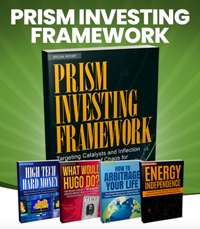 The common thread running through the collective minds of present U.S. stock market investors goes something like this: A great crash is coming. But first there will be an epic run-up climaxing with a massive parabolic blow off top.
The common thread running through the collective minds of present U.S. stock market investors goes something like this: A great crash is coming. But first there will be an epic run-up climaxing with a massive parabolic blow off top.
Hence, to capitalize on the final blow off, investors must let their stock market holdings ride until the precise moment the market peaks – and not a moment more. That’s when investors should sell their stocks and go to cash.
Certainly, this sounds like a great strategy. But, practically speaking, how are you supposed to pull it off? Specifically, how are you supposed to know the exact moment the stock market peaks?
Is the definitive sign of the top when your shoeshine boy offers you a hot stock tip? Is it when your neighbor tells you about his surefire strategy to juice his returns by shorting the Volatility Index (VIX)? Is it when your early morning gym acquaintance proudly boasts how he just purchased a luxury pair of Sea Doos using something called a “portfolio line of credit?” Continue reading







